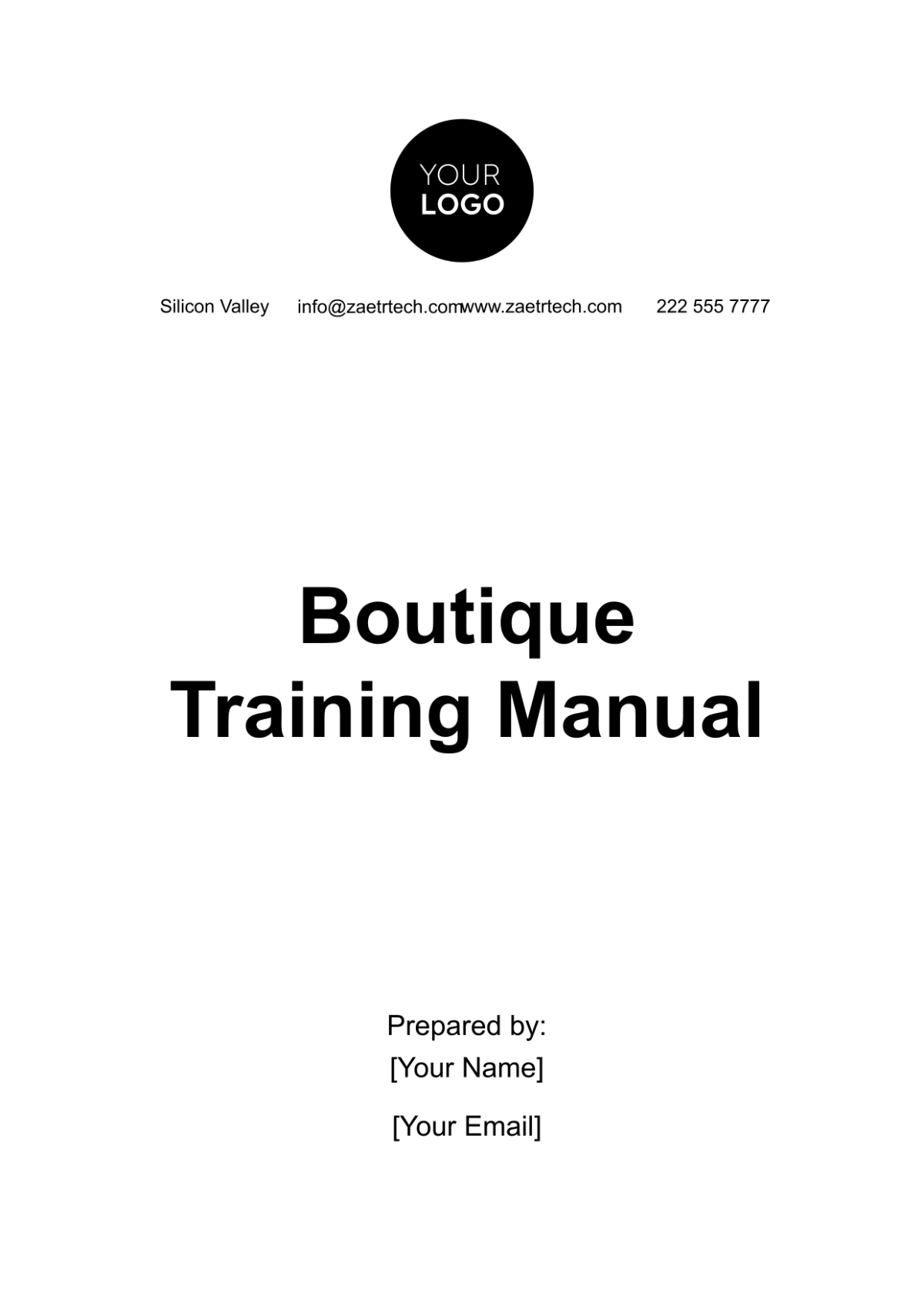Marketing Manual for Product Display and Placement
I. Introduction to Product Display and Placement
Effective product display and placement are the cornerstones of success in today's competitive retail world. How you present your products to your customers can make all the difference in capturing their attention, communicating value, and ultimately driving sales. This manual is your comprehensive guide to mastering the art and science of product display and placement. In the pages that follow, we will explore the critical importance of these practices, their impact on customer behavior, and the strategies and metrics that will help you excel in the ever-evolving retail landscape. Join us on this journey to unlock the full potential of your marketing efforts and create memorable shopping experiences.
Creating an Inviting Shopping Environment is not merely about aesthetics; it's about crafting an atmosphere that resonates with your customers and aligns with your brand identity. Elements such as lighting,
Importance of Effective Product Display
In today's fiercely competitive retail landscape, where consumer choices are abundant and attention spans are limited, the way you showcase your products holds unparalleled significance. According to recent market research, 70% of purchase decisions are made at the point of sale, making the first impression through product display pivotal to your success.
Case studies from leading retailers underscore this point. For instance, a study conducted by the National Retail Federation found that a well-executed product display can increase sales by up to 30%. Similarly, data from Nielsen reveals that 85% of shoppers say that attractive in-store displays influence their purchasing decisions.
The statistics don't lie: effective product display can be the difference between thriving and merely surviving in the retail industry. It's not just about aesthetics; it's about creating an environment that captivates, informs, and entices potential customers. This manual is meticulously crafted to equip you with the knowledge and tools to leverage the power of effective product display and placement, allowing you to stand out in the crowded marketplace.
A. Purpose and Scope of the Manual
This manual isn't just another set of guidelines; it's your comprehensive roadmap to mastering the art of product display and placement. Its purpose is to empower marketing professionals and retail teams with the skills and insights needed to navigate the complexities of modern retail.
Our coverage is broad, addressing the principles of effective display that transcend traditional and digital retail environments. We delve into strategies for optimizing product placement, whether you're dealing with physical store shelves or digital storefronts. Moreover, we recognize the paramount importance of data and metrics in the decision-making process. Throughout this manual, you'll discover how to harness the valuable insights provided by data to continually enhance your product display strategies.
In essence, this manual is your guide to not only understanding the "why" behind effective product display but also the "how." It's your tool for transforming retail spaces into captivating experiences that not only draw customers in but also keep them coming back for more. So, let's embark on this journey together, exploring the art and science of product display and placement.
II. Principles of Effective Product Display
A. Store Layout and Design
In the realm of retail, your store's layout is far from a mere logistical arrangement of shelves and aisles; it's a strategic masterpiece that can make or break your business. The Importance of Store Layout cannot be overstated. It serves as the silent conductor guiding customers through their shopping journey, influencing their decisions at every turn.
Consider this: research has shown that well-planned store layouts can increase sales by up to 20%. The way products are placed, the flow of foot traffic, and the accessibility of key items all contribute to this significant impact. In this section, we will delve into the art and science of Store Layout and Design, equipping you with the knowledge to optimize traffic flow and maximize exposure to your most valuable products.
flooring, and overall ambiance play a crucial role in shaping a welcoming and engaging space. We'll explore how to harmonize these elements to create an environment that beckons shoppers to explore and stay.
Moreover, we'll delve into Considerations for Retail Space Utilization. In the competitive world of retail, every square foot counts. We'll unravel the mysteries of zoning, product placement zones, and high-traffic areas to ensure that you make the most of your available retail space. From the storefront to the back corners, no space will be left unoptimized.
B. Visual Merchandising Techniques
Effective Visual Merchandising is akin to storytelling, a powerful tool that can captivate your customers and lead them on a journey through your products. We'll begin by exploring the Arrangement and Grouping of Products, teaching you how to craft compelling narratives through the placement of items. From creating themes and color schemes to establishing focal points, we'll guide you on how to weave a story that resonates with your customers and drives sales.
Understanding the psychological impact of Color, Lighting, and Signage is fundamental in influencing customer behavior. The choices you make in these areas can evoke emotions, convey messages, and ultimately impact purchase decisions. We'll delve into the science behind these elements, allowing you to craft persuasive signage and lighting strategies that guide customers and reinforce your brand message.
In the ever-changing retail landscape, adaptability is key. We'll explore the creation of Seasonal and Theme-Based Displays, demonstrating how to harness the power of timely, thematic presentations. Whether it's a holiday, a change in season, or a special occasion, we'll show you how to create dynamic displays that not only capture attention but also boost sales.
In the pages that follow, we'll navigate through these principles, providing you with the knowledge and strategies needed to excel in the art of effective product display. Join us on this journey as we uncover the secrets behind creating compelling retail experiences that leave a lasting impression on your customers.
III. Product Placement Strategies
In the dynamic world of retail, success is not solely predicated on the quality of your products but also on where and how you place them. Welcome to the realm of "Product Placement Strategies," where we unlock the strategies and tactics that ensure your products not only catch the eye but also end up in your customers' shopping carts. This section serves as your comprehensive guide to the art and science of product placement, offering insights that can elevate your retail game.
A. Shelf Placement and Organization
Effective shelf placement is akin to orchestrating a symphony of products, each note contributing to a harmonious shopping experience. Shelf Allocation and Planograms are your tools for ensuring this symphony plays out as planned. Dive deep into these strategies, discovering how to strategically position products based on their popularity, demand, and relationships with other items.
Consider this: Eye-Level Placement. This seemingly simple concept can have a profound impact on a product's visibility and sales potential. We'll unveil the science behind eye-level placement and how it influences customer behavior.
But placement isn't just about visibility; it's about Product Accessibility and Convenience. We'll explore how to make sure your products are easily within reach, reducing the effort customers need to make informed purchase decisions.
B. Endcap and Checkout Counter Displays
High-traffic areas like endcaps and checkout counters are prime real estate in the retail world. Here, we will show you the art of Maximizing High-Traffic Areas. These spaces are not just for last-minute purchases; they're your canvas for showcasing featured products, promotions, and irresistible impulse buying opportunities.
Speaking of impulse purchases, Creating Impulse Purchase Opportunities is a finely tuned skill. We'll share tactics on how to strategically place displays and items to tempt customers into making those spontaneous decisions.
C. Cross-Promotions and Bundling
In the world of retail, synergy is key. Pairing Complementary Products and creating bundles that incentivize customers to buy more is an art form. We'll explore the benefits of cross-promotion, showing you how to create pairings that enhance the shopping experience and boost your sales.
Additionally, we'll delve into Encouraging Upsells and Add-Ons. By strategically positioning related products in close proximity, you can entice customers to upgrade or add to their purchase, increasing both their satisfaction and your revenue.
As we continue through this Marketing Manual, stay tuned for a deeper dive into Digital Product Display and E-commerce Strategies, Metrics, and Performance Evaluation, and practical examples and case studies to provide you with a holistic understanding of product display and placement. Get ready to revolutionize your retail strategy with the insights and tactics presented here.
IV. Digital Product Display and E-commerce Strategies
In the fast-evolving digital landscape, mastering the art of product display and placement is more critical than ever. Welcome to the world of "Digital Product Display and E-commerce Strategies," where we will unravel the strategies and tactics required to excel in the online realm. This section is your guide to understanding the nuances of the digital shopping experience, optimizing your online store, and leveraging the power of personalization and recommendation engines to maximize sales.
A. Online Store Layout and Navigation
In the digital realm, your online store is your virtual storefront, and user-friendliness is the key to attracting and retaining customers. User-Friendly Website Design is the foundation of a successful online presence. We'll guide you through designing an interface that allows customers to easily find and explore products. From clear menu structures to intuitive search functionality and well-organized product categories, every element will be dissected to ensure seamless navigation.
But navigation isn't just about finding products; it's about Optimizing Search and Filtering Functions. We'll delve into enhancing the online shopping experience by allowing customers to refine their search results based on attributes like price, size, and brand. Implementing autocomplete search will provide customers with quicker access to the products they desire.
B. Product Imagery and Descriptions
In the digital realm, customers rely on visual and textual cues to make informed decisions. High-Quality Images and Multimedia are your tools for providing customers with a clear and immersive view of your products. We'll guide you on how to invest in high-resolution product images and multimedia content. We'll also show you how to enable zoom functionality and include multiple images from different angles.
But it's not just about what customers see; it's about what they read. Crafting Compelling Product Descriptions is an art that goes beyond listing features. We'll teach you how to create informative and persuasive descriptions that highlight key benefits and unique selling points. Addressing potential questions and concerns customers may have is essential. Including customer reviews and ratings will add credibility to your product descriptions.
C. Personalization and Recommendation Engines
In the digital space, personalization is the name of the game. Tailoring Product Displays to User Preferences is a game-changer. We'll explore how to implement personalization features that customize product displays based on individual user preferences. Data-driven algorithms will be your allies in recommending products based on past behavior and browsing history.
Furthermore, we'll dive into the art of Upselling and Cross-Selling in the Digital Space. Leverage the digital landscape to suggest complementary products during the shopping journey and offer bundled discounts to encourage additional purchases.
As we journey through this section, you will gain a comprehensive understanding of how to excel in the world of digital product display and e-commerce. Stay tuned for practical examples, case studies, and insights that will empower you to revolutionize your online retail strategy. Get ready to thrive in the ever-expanding digital marketplace.
V. Metrics and Performance Evaluation
In the world of product display and placement, success isn't just about intuition and creativity; it's about hard data and informed decisions. Welcome to the realm of "Metrics and Performance Evaluation," where we will explore the essential tools and methods for measuring the effectiveness of your strategies and making data-driven improvements. This section is your guide to understanding the key performance indicators (KPIs), the power of A/B testing and experimentation, and the importance of continuous improvement and adaptation.
A. Key Performance Indicators (KPIs)
Key Performance Indicators (KPIs) are the compass that guides your journey in the world of product display and placement. Sales and Conversion Rates are among the most critical KPIs, offering a direct measurement of your strategy's impact on the bottom line. By monitoring these metrics, you can identify top-performing products and categories, allowing you to focus your efforts where they matter most.
Customer Traffic and Dwell Time provide a glimpse into customer engagement levels. Whether in a physical store or online, tracking foot traffic and user traffic is vital. Moreover, analyzing how much time customers spend interacting with your products can reveal valuable insights into the effectiveness of your displays.
Additionally, Customer Feedback and Satisfaction should not be overlooked. Soliciting feedback through surveys, reviews, and post-purchase evaluations allows you to gauge customer satisfaction levels. This feedback is a goldmine for identifying areas where your product display and placement strategies may need improvement.
B. A/B Testing and Experimentation
In the ever-evolving world of retail, adaptability is key, and A/B Testing and Experimentation are your tools for staying ahead of the curve. Testing Different Displays and Placement Strategies is not a luxury but a necessity. Through controlled experiments, you can compare different variations of your strategies and assess their impact on key metrics like sales, conversion rates, and customer engagement.
The real power lies in Analyzing Data to Optimize Product Presentation. Use the insights gathered from experiments to fine-tune your product presentation. Implement successful strategies and iterate on less effective ones to continuously optimize your display and placement methods.
C. Continuous Improvement and Adaptation
Product display and placement are not static endeavors; they require an Iterative Approach. Continuous refinement is key. Base your improvements on performance data, customer feedback, and evolving market trends. In this section, we will emphasize the importance of staying agile in response to Market Trends.
To remain competitive and meet evolving customer expectations, you must stay informed about market trends, customer preferences, and emerging technologies. Your ability to adapt your display and placement strategies is the linchpin of long-term success in the ever-shifting landscape of retail.
As we delve deeper into this section, you'll gain a comprehensive understanding of how to use data to drive improvements in your product display and placement strategies. Stay tuned for practical examples, case studies, and insights that will empower you to make informed decisions and continuously elevate your retail game.

















































